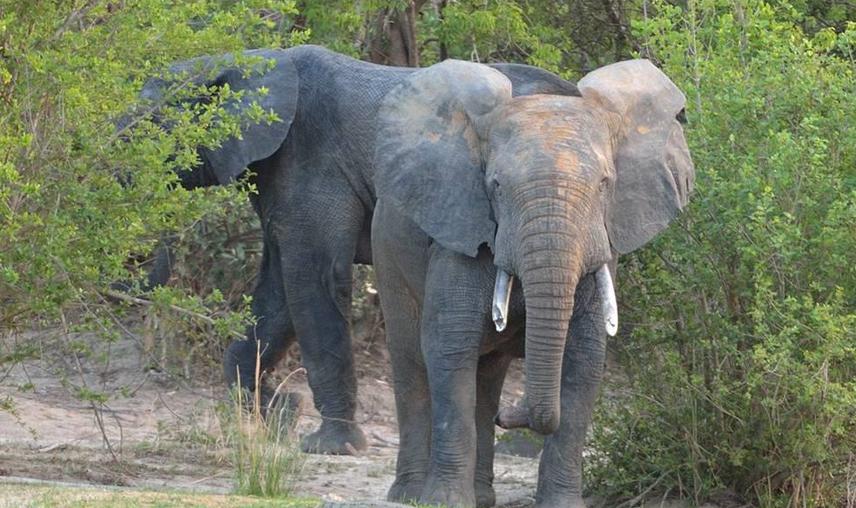Méryas Dègbémabou Kouton
This project aims to develop, test and make available to the management system of the park, decision-making tools that can improve the protection of elephants. The management system includes the direction of the park, the association of riparian populations and the decentralized communities. This work will identify and map all the ponds in the BRP and study their frequentation by elephants. Coupled with the analysis of the spatial distribution of the carcasses, the elephant slaughter hotspots will be determined and the monitoring design can be refined.
Awareness-raising will be carried out addressing local authorities and decision-makers for better control of elephant poaching.
Awareness-raising will also be carried out with schoolchildren viewing changing the behavior on the problems of conservation in general and that of elephants in particular, which will have a positive effect on poaching by their parents.

African elephant (Loxodonta africana) is vulnerable specie on a global scale and in Benin (www.iucnredlist.com). Elephant populations are experiencing a drastic decline in West Africa. This iconic species in Africans protected areas is increasingly threatened by anthropogenic activities and climate change effects. Although Benin has adopted a national elephant conservation strategy since 2005 after a national protected areas management strategy, population of that emblematic specie is decreasing into Biosphere Reserve of Pendjari due to poaching.
Elephant carcasses encountered during patrols are 25 to 50 per year and are increasing since 5 years, while the population is estimated near 2000 in 2015. Then It is imperative to sharpen conservation methods specific to elephant in order to slow down and further reverse the trend of population regression.
On that way, this project aims to develop, test and make available to the management system of the park, decision-making tools that can improve the protection of elephants.
To achieve that goal, we plan the:
1- Census and mapping of water points in the RBP
2- Spatial analysis of elephant’s distribution and carcasses.
3- Awareness local authorities and scholars (with posters) on the conservation of the elephant.
4- Ecotourism visits and participation of schoolchildren in the management of a pond
The first expected output of this work is the reduction of elephant poaching in BRP. The managers will get materials (maps, graphics indicating the location of pools and the zones inhabited by elephants, what information is so sensitive to the conservation of the species. On that basis, tools of good management, especially of a good surveillance and monitoring by the permanent occupation of the hotspot of elephant poaching will be determined. Awareness raising on local administrative authorities and pupils, leading to public awareness of elephant conservation, will have the advantage of informing more than 50% of the population about the importance of elephant conservation. The posters will be displayed in schools, administrations and public places for the communication. Visits will allow beneficiaries to see the beauty of elephant herds in natural environment and understand what tourism brings to the community opposed to poaching
Thus, as a direct result, we have the reduction of elephant poaching, which will be followed after the project and induced effect and impact, reducing of all animal poaching and increasing of visitor’s numbers and thus the increase of the part of revenues (30%) for riparian population.
E-mail: [email protected] or [email protected]
Website: https://www.researchgate.net/profile/Meryas_Kouton
Facebook: https://web.facebook.com/meryas.kouton
LinkedIn: https://www.linkedin.com/in/meryaskouton/